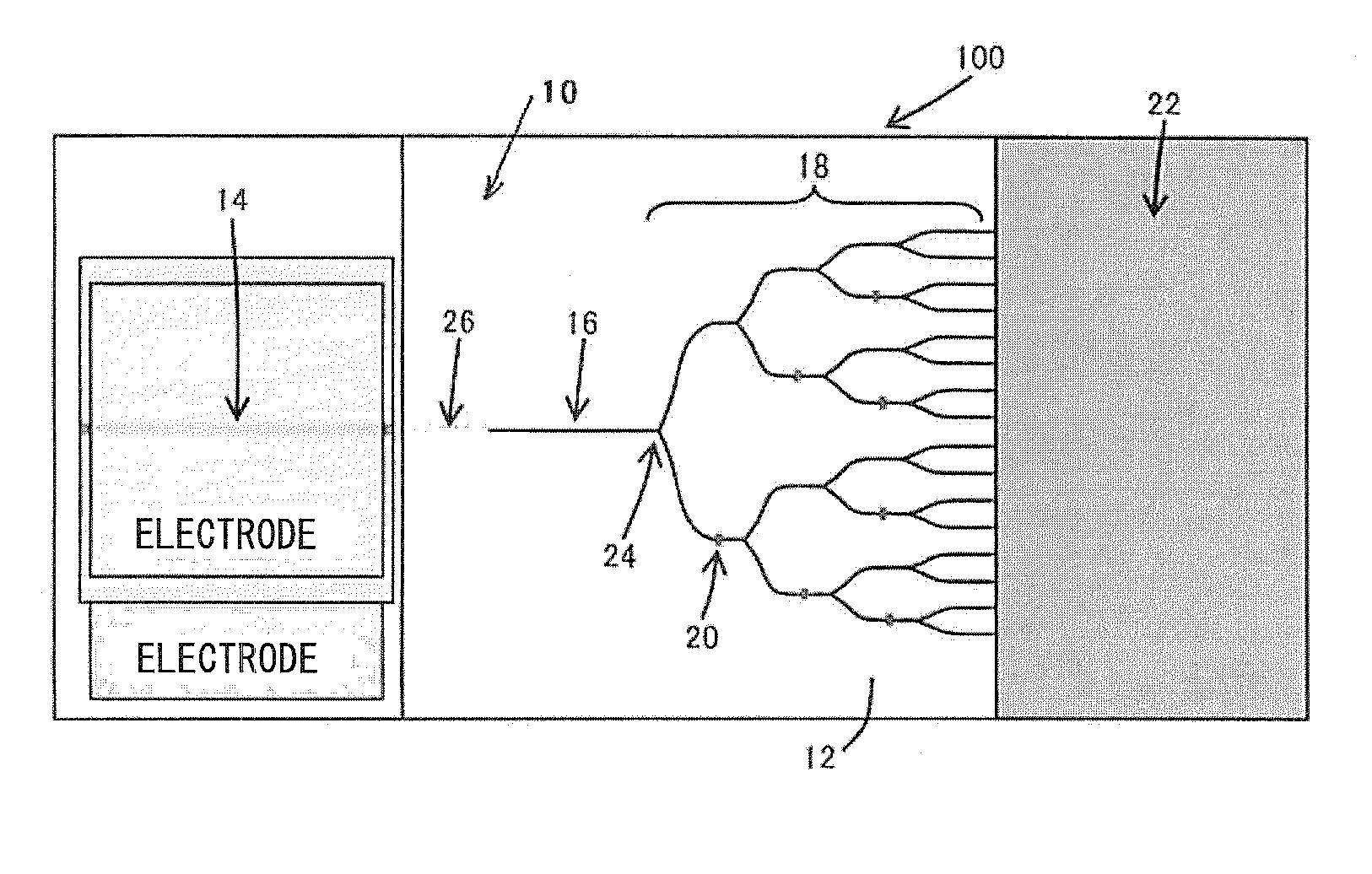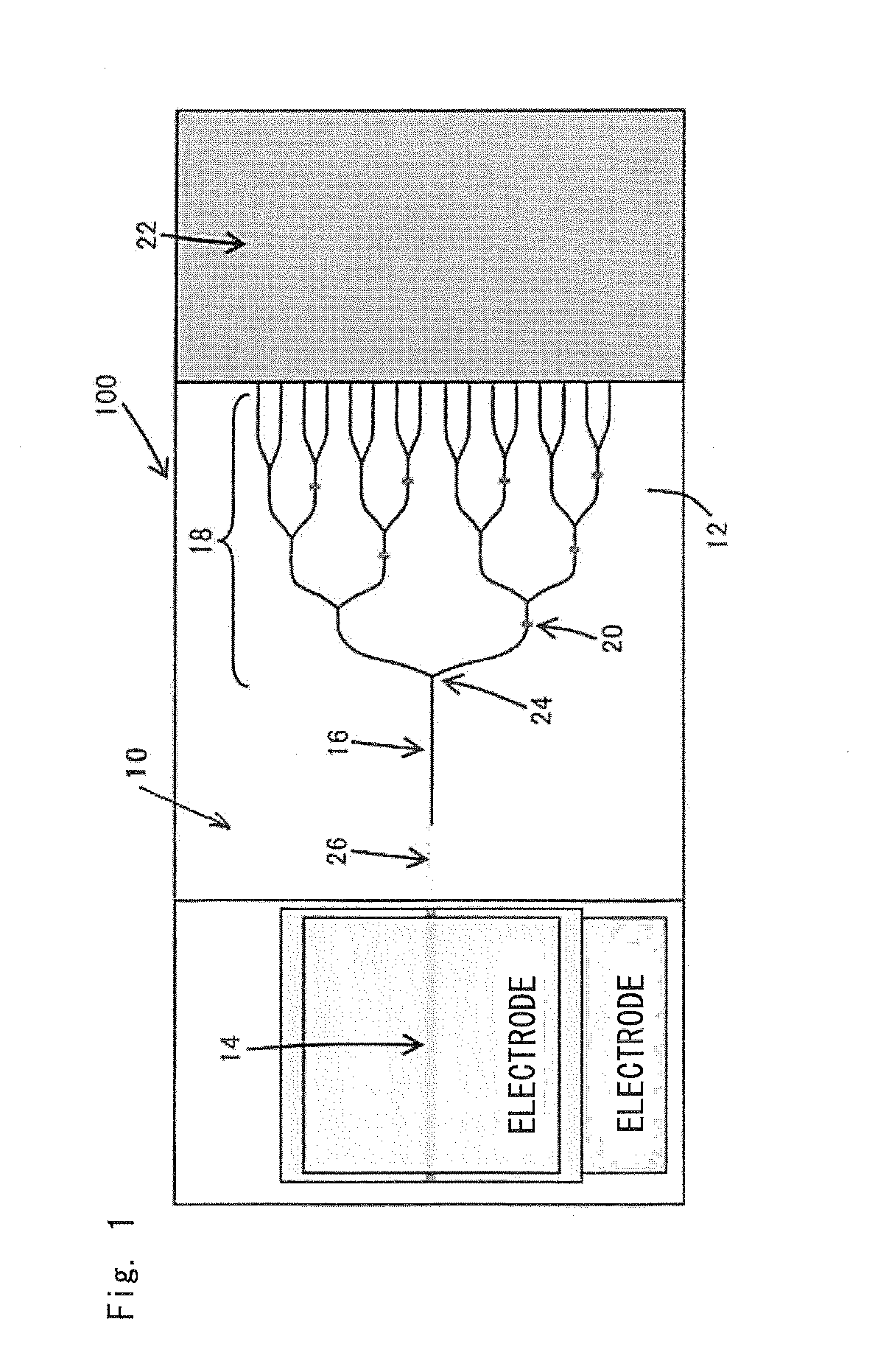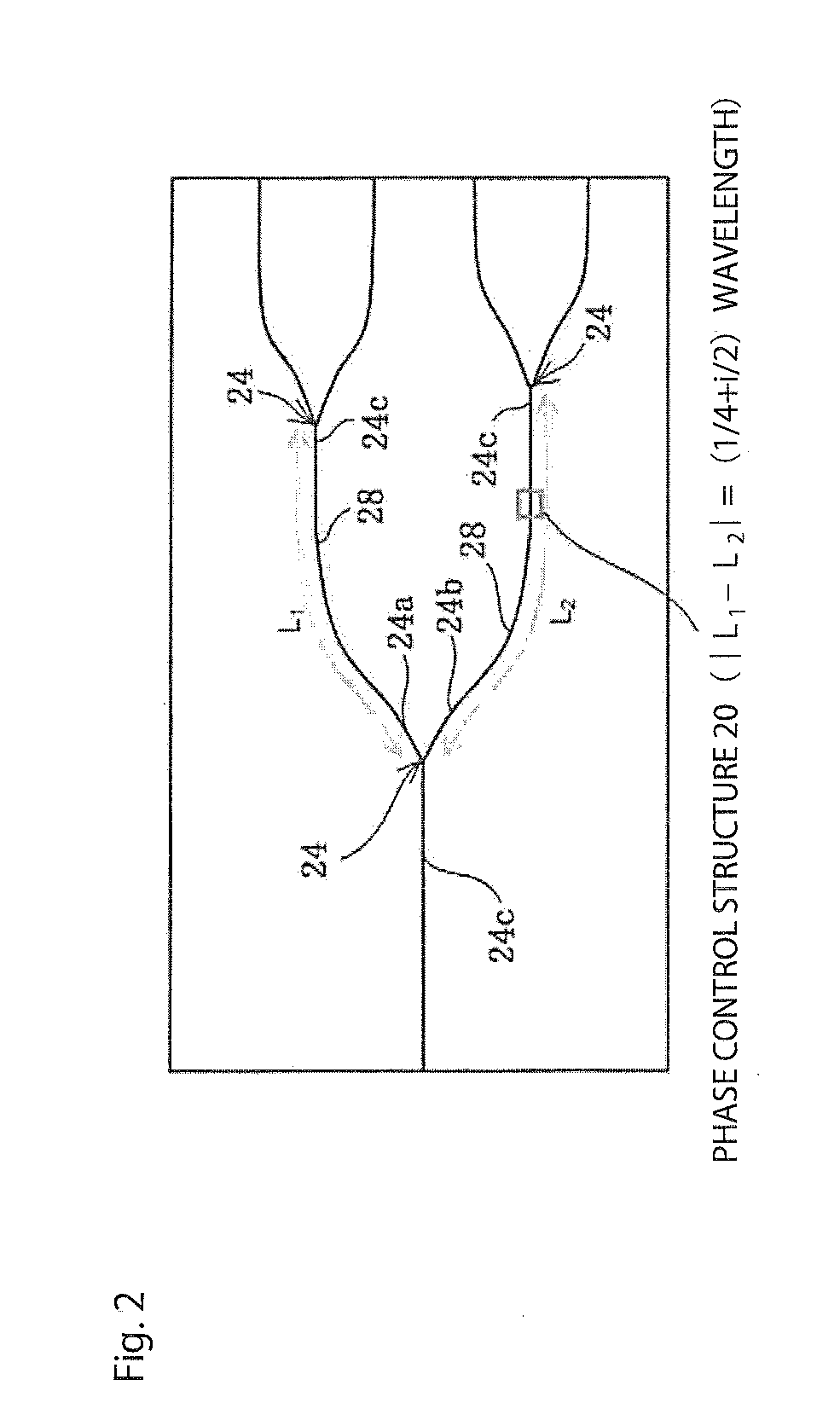Light source circuit and light source device equipped with same
- Summary
- Abstract
- Description
- Claims
- Application Information
AI Technical Summary
Benefits of technology
Problems solved by technology
Method used
Image
Examples
first embodiment
of Light Source Circuit
[0093]In this regard, the returning light of the two-stage branched optical waveguide 30 according to the present invention to which the phase control structure 20 including the optical waveguide of the light path length of λ / 4 is introduced as illustrated in FIG. 5 is considered. In the two-stage branched optical waveguide 30 to which the phase control structure 20 is introduced, the reflection light is generated in the one first stage optical branch section 24, and the two second stage optical branch sections 24, and the reflection light generated in the two second stage optical branch sections 24 returns to the input terminal 24c of the first stage optical branch section 24 through each of the first output terminal 24a and the second output terminal 24b of the first stage optical branch section 24.
[0094]Here, the optical waveguide of the light path length of λ / 4 is introduced to any one of the optical waveguides 28 connected to each of the first output term...
second embodiment
of Light Source Circuit
[0100]A multi-stage branched optical waveguide of three or more stages is able to be realized by simply performing the cascade connection with respect to the branched optical waveguide. In FIG. 6, the light source circuit including a four-stage branched optical waveguide 32 (a 16-branched optical waveguide) to which the phase control structure is introduced is illustrated. In the multi-stage branched optical waveguide 32 of three or more stages, according to the same principle as in the two-stage branched optical waveguide 30 described above, it is possible to completely inhibit the returning light caused by the optical branch section 24 after the second stage.
[0101]Thus, in the multi-stage branched optical waveguide 18 to which the phase control structure 20 is introduced, the reflection light from the optical branch section 24 after the second stage does not contribute to the returning light, and in the two-stage branched optical waveguide 30 or the multi-st...
third embodiment
of Light Source Circuit
[0110]The light propagated through the optical waveguide 28 has a property of being reflected in a portion where the structure is changed. For this reason, the reflection light may be generated in a connection portion between the optical waveguide 28 and the optical device 22. Thus, in order to inhibit the returning light caused by the optical device 22, the phase control structure 20 may be introduced between the optical device 22 and the previous-stage optical branch section 24 thereof as illustrated in FIG. 7.
[0111]For example, in this case, the phase control structure 20 may be an optical waveguide of a length for satisfying |L1−L2|=(¼+i / 2)λ (i=0, 1, 2, . . . ) when the light path lengths of the optical waveguide 28 between the input terminal of the optical device 22 and the two output terminals 24a and 24b of the previous-stage optical branch section 24 of the optical device are set to L1 and L2. Accordingly, it is possible to inhibit the returning light ...
PUM
 Login to View More
Login to View More Abstract
Description
Claims
Application Information
 Login to View More
Login to View More - R&D
- Intellectual Property
- Life Sciences
- Materials
- Tech Scout
- Unparalleled Data Quality
- Higher Quality Content
- 60% Fewer Hallucinations
Browse by: Latest US Patents, China's latest patents, Technical Efficacy Thesaurus, Application Domain, Technology Topic, Popular Technical Reports.
© 2025 PatSnap. All rights reserved.Legal|Privacy policy|Modern Slavery Act Transparency Statement|Sitemap|About US| Contact US: help@patsnap.com



